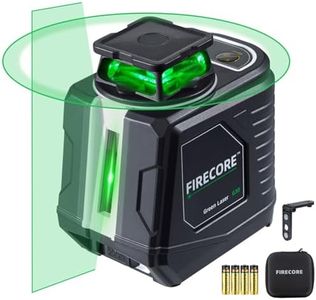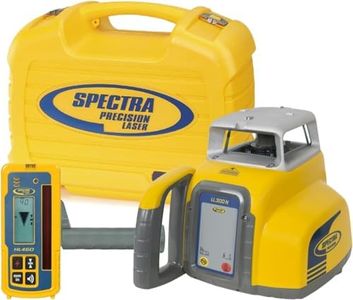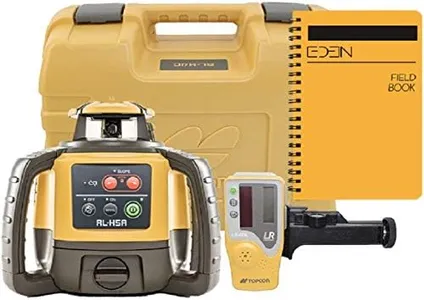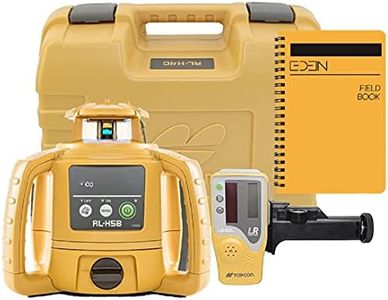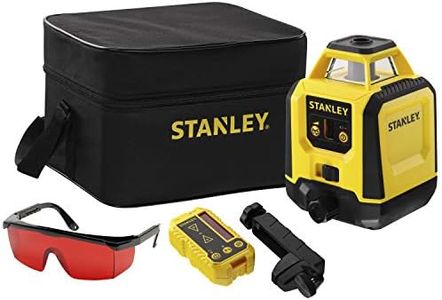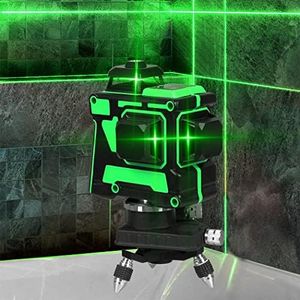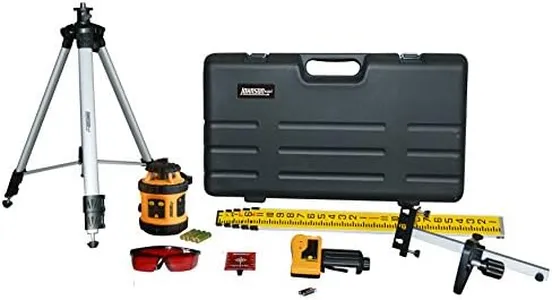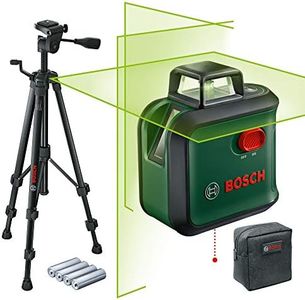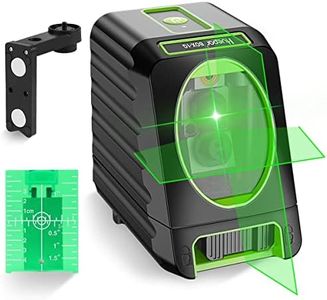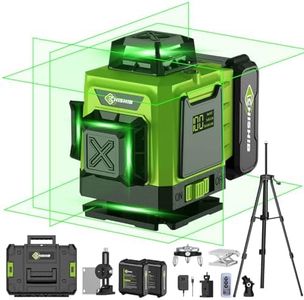We Use CookiesWe use cookies to enhance the security, performance,
functionality and for analytical and promotional activities. By continuing to browse this site you
are agreeing to our privacy policy
10 Best Rotary Laser Levels
From leading brands and best sellers available on the web.Buying Guide for the Best Rotary Laser Levels
Choosing a rotary laser level can make your leveling and alignment projects much easier and more precise. These devices are used to project a 360-degree horizontal or vertical laser line across a space, making them ideal for construction, landscaping, and interior work like installing drop ceilings or tiling. When picking a rotary laser level, it’s important to match the features with your actual needs—think about your typical work environments, indoor versus outdoor settings, the kind of projects you tackle, and how easy you want setup and operation to be.AccuracyAccuracy in a rotary laser level tells you how closely the level can maintain a true horizontal or vertical line, usually measured in millimeters at a certain distance or fractions of an inch per hundred feet. This is crucial because higher accuracy means better results on your projects, especially for tasks like foundations or tiling where errors can multiply. Generally, professional or precision projects need higher accuracy (such as ±1/16 inch at 100 feet), while casual or simpler jobs, like landscaping or fence installation, can tolerate a bit more leeway. Think about how exact your projects need to be and pick a level that matches those demands.
RangeThe range is how far the laser beam from the level can be detected, either with the naked eye or with a laser receiver. Working range can be as short as a few feet for small, indoor jobs, or up to several hundred feet for large outdoor layouts. If you regularly work on big construction sites or outside areas, a longer range will give you more flexibility. If your work is mostly inside or in tight spaces, a shorter range may be enough and can sometimes mean a simpler, more compact tool.
Self-Leveling CapabilitySelf-leveling refers to whether the device can automatically find and maintain a level line, correcting for slight bumps or tilts. Manual leveling requires you to adjust the device by hand, which can be slow and prone to mistakes. Self-leveling rotary lasers are far more convenient and reliable, especially if you’re working on uneven terrain or move the tool often. For most users, self-leveling is the best choice unless you only work on perfectly flat surfaces or don’t mind regular adjustments.
Durability and Weather ResistanceThis spec covers how well the rotary laser level can handle job site conditions like dust, rain, or drops. More robust models have features like thick housings, sealed buttons, and are rated for water and dust resistance (often marked as IP ratings). If you’re working outdoors, around water, or in harsh conditions, opt for a model with a high durability and good weather resistance. For indoor or occasional use, this may be less of a concern.
Power Source and Battery LifeRotary laser levels can use rechargeable batteries, replaceable batteries, or connect to AC power. Battery life becomes important for all-day use or remote locations. If your work keeps you away from easy charging options, consider models with long battery life or flexible battery options. For smaller jobs or mostly indoor use, power needs are less demanding.
Laser Color (Green vs. Red)Rotary laser levels commonly come with red or green lasers. Green lasers are more visible to the naked eye, especially in bright conditions, but they tend to use more power and can cost a bit more. Red lasers are generally enough for indoor and low-light work. Choose green if you’re often outdoors or in well-lit spaces and need to see the line clearly without a receiver; otherwise, red is usually fine.
Mounting and Rotation SpeedMounting refers to how easily the level can be set up on tripods or other supports, and rotation speed is how fast the beam spins (measured in RPM). Faster speeds spread the laser line further and make it more visible, but can be harder to see in some conditions. Think about your typical uses: for outdoor, large-area work, higher speeds can be better; for interior work or fine detail, slower speeds may suffice.
